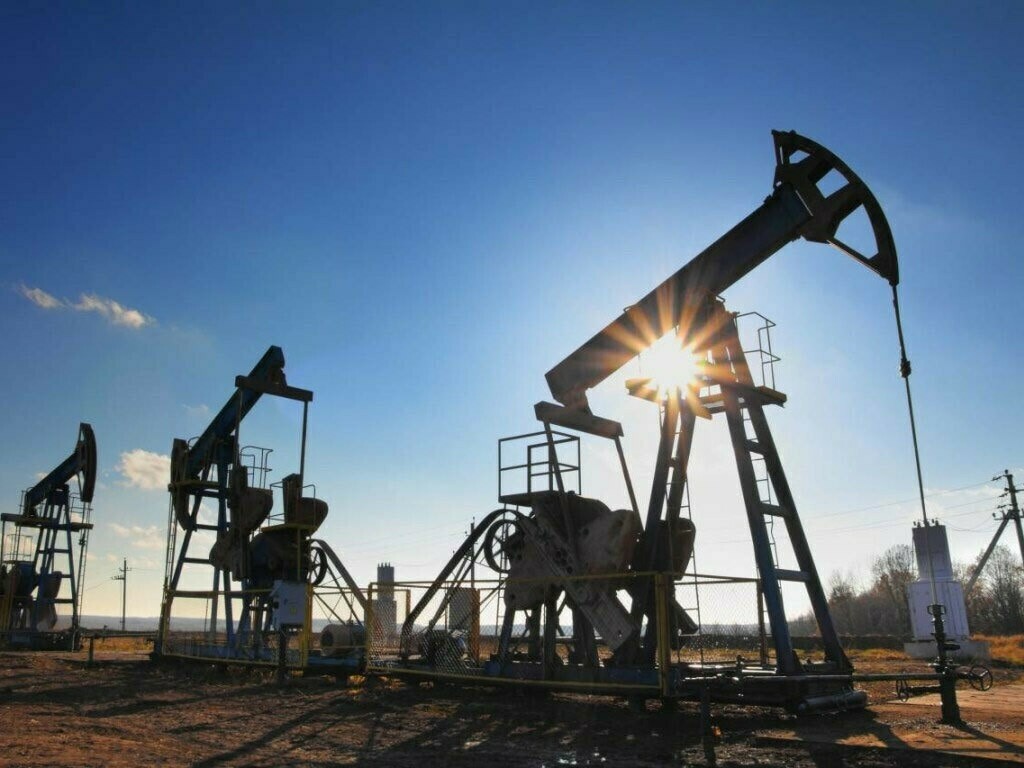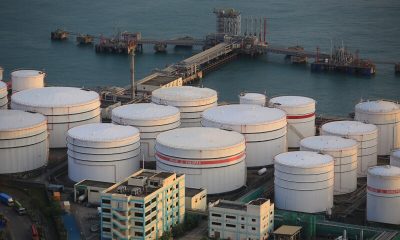Commodities
Oil prices climb on bargain hunting ahead of US Fed rate decision

Oil prices traded up on Tuesday on bargain hunting, recovering some ground from the previous day’s plunge, but gains were limited as investors remained cautious ahead of key policy decisions by the U.S. Federal Reserve and other central banks.
Brent crude futures climbed 77 cents, or 1.1%, to $72.61 a barrel by 0640 GMT. U.S. West Texas Intermediate (WTI) crude was at $67.68 a barrel, up 56 cents, or 0.8%.
Both benchmarks fell around $3 a barrel on Monday after analysts highlighted rising global supplies and concerns about demand growth just ahead of key inflation data and a two-day Fed monetary policy meeting concluding on Wednesday.
“Some investors looked for bargains after the previous day’s heavy selling while others held back their positions with speculation that Saudi Arabia may cut production additionally,” said Tatsufumi Okoshi, a senior economist at Nomura Securities.
Oil prices could fall further because of China’s faltering economic recovery, he added, predicting WTI would trade in the range of $62.50 to $75 a barrel during the summer, but mainly below $70 a barrel.
Most market participants expect the U.S. central bank to leave interest rates unchanged at its policy meeting. The Fed’s rate hikes have strengthened the greenback, making dollar-denominated commodities more expensive for holders of other currencies and weighing on prices.
The European Central Bank is expected to hike interest rates by another quarter percentage point on Thursday to tame stubborn inflation. But the Bank of Japan, which will announce its plan on Friday, is expected to maintain its ultra-loose policy.
In China, disappointing economic data last week raised concerns about demand growth in the world’s largest crude importer, offsetting a boost in prices from Saudi Arabia’s pledge to cut more production in July.
The market is also waiting for demand outlooks from Organization of Petroleum Exporting Countries (OPEC) and the International Energy Agency (IEA), due later on Tuesday, Nomura’s Okoshi said.
“In our view, the latest fall in oil prices increases the probability Saudi Arabia will at least extend supply cuts currently in place for July,” said National Australia Bank analysts in a note.
“On this basis, market speculation on the potential for further supply cuts at the next OPEC meeting is likely to drive oil price volatility.”
Saudi Arabia last week said it would cut its July output by 1 million barrels per day (bpd) to 9 million bpd, its biggest reduction in years, in a move to boost prices.
Commodities
Oil prices rise; U.S. crude inventories plunge, Russia-Ukraine truce eyed
Commodities
India’s Reliance to stop buying Venezuelan oil over US tariffs, sources say
Commodities
Oil prices climb on Venezuela supply worries

 Forex3 years ago
Forex3 years agoForex Today: the dollar is gaining strength amid gloomy sentiment at the start of the Fed’s week

 Forex3 years ago
Forex3 years agoUnbiased review of Pocket Option broker

 Forex3 years ago
Forex3 years agoDollar to pound sterling exchange rate today: Pound plummeted to its lowest since 1985

 Forex3 years ago
Forex3 years agoHow is the Australian dollar doing today?

 Cryptocurrency3 years ago
Cryptocurrency3 years agoWhat happened in the crypto market – current events today

 World3 years ago
World3 years agoWhy are modern video games an art form?

 Commodities3 years ago
Commodities3 years agoCopper continues to fall in price on expectations of lower demand in China

 Economy3 years ago
Economy3 years agoCrude oil tankers double in price due to EU anti-Russian sanctions



































